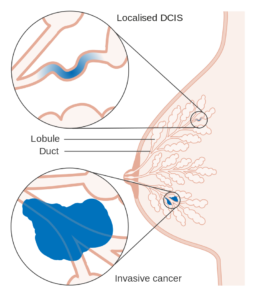Prenatal Genetic Screening – Relevance in Down’s syndrome and other genetic analysis

Dr. Biswarup Ghosh, PhD, Neucrad Health March 22, 2022
For the last three decades almost there has been increased relevance in testing pregnant women via various methods for the presence of various chromosomal anomalies in the developing foetus. The advancements in science in the field of medical biotechnology about more knowledge, and learning the increased relevance of prenatal genetic screening for understanding any kind of developmental anomalies in a foetus is of high clinical significance in today’s world. The testing usually combines various factors such as maternal age, components present in the mother’s blood, and ultrasound evidence which leads to proper medical evidence for any precautions. Another critical factor is the time of tests which should be preferably performed either in the first or second semester. The tests have a success rate of almost between 88-96% for Down’s syndrome and 85-95% for Edwards’s syndrome mainly depending upon the timing of the test (1-3).
Technological advancements in the field of prenatal detection tests include methods to identify possible chromosomal structural faults or faults in total chromosomal number, by array-based methods like chromosomal microarray analysis (CMA) and next-generation sequencing (NGS). CMA and NGS have been not only able to distinguish between genetic abnormalities but also other defects like the development of the brain, intellectual abilities, and other broad and rare genetic disorders. (1, 4). A newer method to complement the already existing methods CMA and NGS is newly developed whole-exome sequencing (WES). All these methods are performed after the mother’s serum is collected via chorionic villi sampling (CVS) and Amniocentesis.
Chromosomal Microarray Analysis (CMA)
One of the significant and essential goals of prenatal genetic screening was mainly to identify the three most commonly occurring chromosomal genetic anomaly arising from non-disjunction of chromosomes namely Down’s syndrome (Trisomy of 21st chromosome), Edward’s syndrome (Trisomy 18th chromosome) and Patau’s syndrome (Trisomy 13th chromosome). These were tested by diagnostic amniocentesis where amniotic fluid is collected from the uterus containing foetal cells and CVS (a small sample of the placenta is collected) to lead a proper precaution if results were positive. The primary diagnosis was made by a conventional karyotyping in the cells isolated from the amniotic fluid collected to identify any anomalies. Karyotyping could detect any defect or structural changes which would usually be larger than 5-10 Mbp. This method would often be complemented with fluorescence in situ hybridization (FISH) which would be used to detect smaller local structural changes by using locus-specific probes (1).
With the inception of CMA, methods were revolutionized. CMA is easy to carry out as DNA which is usually labelled with various probes hybridizes with different probes which are present across the genome on a slide. The probes on the DNA hybridize with the probes on the slides, there is a change in the fluorescence intensity. The difference in the fluorescence intensity may be higher or lower, which is identified as regions in the DNA with extra copies of chromosome or deletion, respectively. Since the method does not require any cells for cell culture, hence the results are easily available. CMA is easy and reliable and can easily detect multiple aneuploidies in the entire genome spanning up to kilobases in length or even in exons. CMA has now been developed as one of the forerunning genetic analysis tests, especially in developing foetus with parents with a history of genetic problems in their pedigree and other intellectual and developmental disabilities (6). The diagnostic yield of CMA is around 15-20% (1, 6).

The paradigm shift towards NGS
Initially, in the 1990s prenatal genetic screening was both invasive and at times non-comprehensible, whose success rate was no more than the usual maternal serum screening method. They were usually able to detect structural abnormalities and different single-gene mutations. They were mainly used to be done by isolating foetal cells. One of the significant reasons these methods were redundant was mainly because the circulating foetal cells were rare and it was usually difficult to purify. When PCR was first utilized by Lo et al. to amplify male foetal cells from maternal plasma, more investigations were directed towards analysis of cell free foetal DNA which with the help of PCR were used to detect foetal gender, Rhesus factor type and single gene mutations de novo (1, 7).

Later in 2008, extensive research by two separate groups led to conclude that cell-free DNA NGS derived from the maternal plasma which contains approximately 10% placental cells thus representing the foetal genome which could then be analyzed for foetal aneuploidy by counting sequence-tagged sites mapped on each chromosome (1, 8-9). Following this method, other investigative methods like multiplex PCR and one based on selection and sequencing of specific tags have also been developed which have a much better detection rate for Down’s syndrome (99.84%), Edwards (96.6%) and Patau’s syndrome (86.4%) respectively. Although these studies were mainly carried out in areas where the population chosen were at high risk of giving birth to babies with such diseases automatically. Simultaneously in populations where the positive prediction values were supposedly low, and the average has shown predictable results which proved that this method was still significantly better than crude marker serum methods used as conventional methods (1, 10).
Whole exome sequencing
Most recent advances in the field of prenatal and reproductive testing are foetal whole-exome sequencing. Usually, when ultrasound is used to detect any foetal abnormalities, karyotype and CMA reveals a diagnosis in up to 30% of cases depending on the structural defect (11). WES can help us attain reliable results in the majority of cases. In WES, the codons which represent only 2% of the genome but usually contains 85% of the mutation deleterious in nature are sequenced. In a standard paediatric population, WES is used to refer almost 25% of the population suspected with any genetic defects. Recently there has been a surge of WES being used for similar kind of tests in case of abnormal prenatal conditions.
Advances in personalized genomic medicine are now highly encouraged to be used for the better government of prenatal genetic abnormalities in general population. Although we need to embrace this advancement in technology, we need to be careful with its associated risks in terms of reproducibility and reliability and also keep in mind the ethical concerns regarding the same.
References:
- Veyver B. I; Recent advances in prenatal genetic screening and testing: Review; F1000Research 2016, 5(F1000 Faculty Rev):2591.
- Practice Bulletin No. 163 Summary: Screening for Fetal Aneuploidy. Obstet Gynecol. 2016; 127(5): 979–81.
- Grody WW, Thompson BH, Gregg AR, et al.: ACMG position statement of prenatal/preconception expanded carrier screening. Genet Med. 2013; 15(6):482–3.
- Van den Veyver IB, Patel A, Shaw CA, et al.: Clinical use of array comparative genomic hybridization (aCGH) for prenatal diagnosis in 300 cases. Prenat Diagn. 2009; 29(1): 29–39.
- Stankiewicz P, Beaudet AL: Use of array CGH in the evaluation of dysmorphology, malformations, developmental delay, and idiopathic mental retardation. Curr Opin Genet Dev. 2007; 17(3): 182–92.
- Miller DT, Adam MP, Aradhya S, et al.: Consensus statement: chromosomal microarray is a first-tier clinical diagnostic test for individuals with developmental disabilities or congenital anomalies. Am J Hum Genet. 2010; 86(5): 749–64.
- Van den Veyver IB, Eng CM: Genome-Wide Sequencing for Prenatal Detection of Fetal Single-Gene Disorders. Cold Spring Harb Perspect Med. 2015; 5(10): pii: a023077.
- Hillman SC, McMullan DJ, Hall G, et al.: Use of prenatal chromosomal microarray: prospective cohort study and systematic review and meta-analysis. Ultrasound Obstet Gynecol. 2013; 41(6): 610–20.
- Curnow KJ, Wilkins-Haug L, Ryan A, et al.: Detection of triploid, molar, and vanishing twin pregnancies by a single-nucleotide polymorphism-based noninvasive prenatal test. Am J Obstet Gynecol. 2015; 212(1): 79.e1–9. Talkowski ME, Ordulu Z, Pillalamarri V, et al.: Clinical diagnosis by whole-genome sequencing of a prenatal sample. N Engl J Med. 2012; 367(23): 2226–32.
- Yang Y, Muzny DM, Xia F, et al.: Molecular findings among patients referred for clinical whole-exome sequencing. JAMA. 2014; 312(18): 1870–9.









